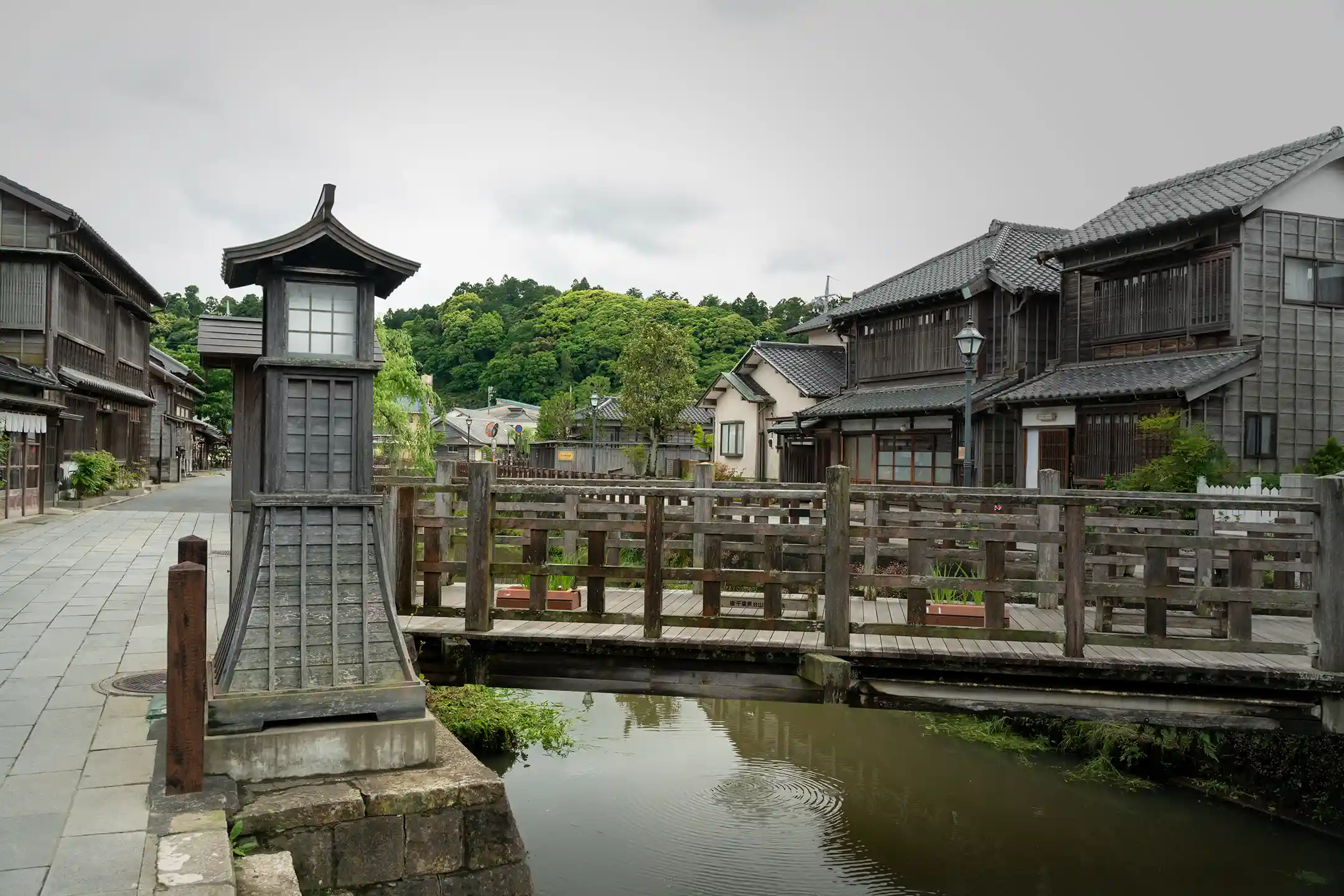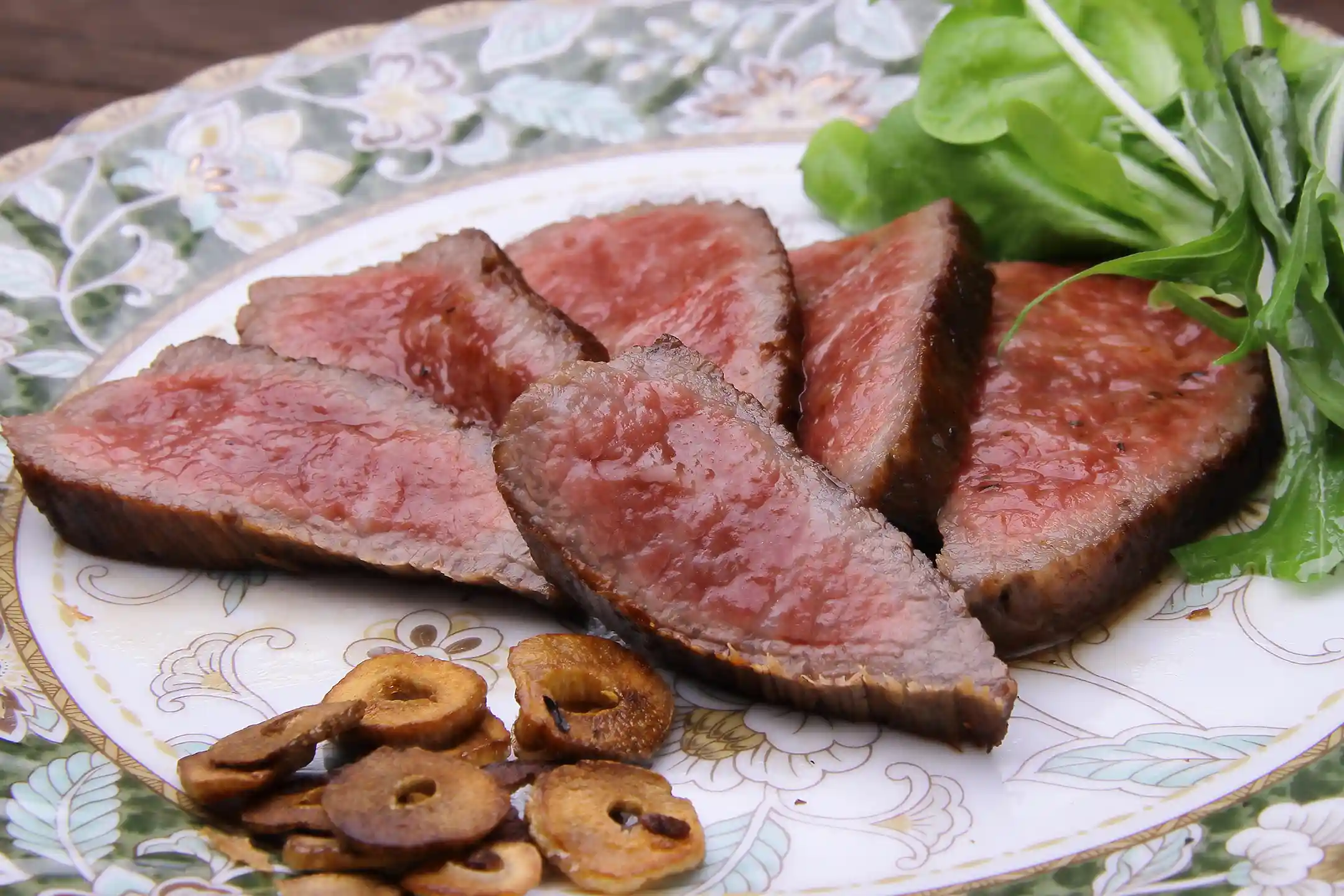Traveling through Japan’s quaint small towns reveals a unique kind of luxury — one defined not by extravagance, but by serenity and tradition. When you leave behind the bustle of urban life, your mind unwinds and your senses reawaken — a deeply rewarding experience. Imagine taking quiet strolls along historic streets, staying in beautifully renovated old buildings, and immersing yourself in local art seamlessly woven into the town’s fabric.
These sophisticated experiences invite you to discover a lesser-known side of Japan. For the curious traveler seeking authentic cultural experiences, each small town in Japan is a treasure trove of heritage and artistry waiting to be explored. In this article, you'll learn about a style of travel that satisfies your intellectual curiosity through architecture, art, local history, gourmet cuisine, and sustainable practices — an approach unique to Japan’s small towns.
Historical Charm, Architecture, and Art in Japan’s Small Towns
In rural Japan, historical neighborhoods seamlessly blend with vibrant contemporary art scenes. Rather than simply preserving old townscapes as static relics of the past, these towns continually infuse fresh artistic expressions into their traditional spaces. Many Western countries preserve historic areas too, but here in Japan’s small towns, the towns themselves become living canvases where tradition and innovation coexist in harmony.
Historical Districts Preserving the Beauty of Japanese Architecture
Throughout Japan’s small towns, you can find well-preserved historic districts such as castle towns (settlements that grew around feudal castles) and post towns (former rest stops along ancient travel routes). When rapid modernization began to threaten these cherished landscapes, Japan responded by amending its Cultural Properties Protection Law in 1975, leading to the creation of the "Important Preservation Districts for Groups of Traditional Buildings" system (1).
Under this system, local governments and residents work hand in hand to maintain the historic character of their towns. As of 2024, 129 districts nationwide have been designated as important preservation areas, protecting around 30,000 traditional buildings (1). Walking through these areas, you can immerse yourself in the warmth of wooden homes and admire the stately white-walled storehouses, almost as if you've stepped back in time.
Importantly, these districts are not just stage sets for tourists — they remain vibrant, lived-in neighborhoods. It’s this genuine, everyday warmth and beauty that continues to captivate visitors from around the world, and it will likely enchant you as well.
Reviving Traditional Architecture as Modern Accommodations
Repurposing historic buildings has become a global trend — you see it in Europe, where old castles and monasteries are turned into hotels. In the same spirit, Japan’s small towns are increasingly renovating traditional houses and warehouses into elegant places for you to stay.
One fascinating approach is the "dispersed hotel" concept (known in Italian as Albergo Diffuso), which transforms scattered historic buildings across a town into hotel rooms, lobbies, and dining areas. This idea has been gaining popularity in Japan (2). For example, in Sawara, Chiba Prefecture, century-old merchant homes and storehouses have been converted into guest rooms, collectively forming the Nipponia Sawara Merchant Town Hotel (3). As a guest here, you move through the town to check in, dine, and sleep, giving you the feeling that the entire town is functioning as one grand hotel.
These distinctive accommodations perfectly blend the nostalgic charm of traditional architecture with modern comforts. You’ll find original wooden beams and sturdy pillars alongside plush beds and stylish bathrooms. Staying in such a place is an immersive experience, allowing you to live within history while still enjoying every contemporary amenity.
Guided Tours Exploring Local Art and Traditional Crafts
When you think of contemporary art, you might picture pristine museum galleries. However, Japan’s small towns offer something different: creative art projects and craft experiences deeply rooted in the local community. By joining guided tours that visit these installations and workshops, you can have meaningful interactions with the creators themselves. Across Japan, regional art festivals weave together local landscapes, age-old traditions, and cutting-edge art, fostering genuine community connections (4).
For example, the Setouchi Triennale and the Echigo-Tsumari Art Triennale transform entire villages into expansive outdoor museums. On guided tours through these festival sites, you'll experience captivating artworks in situ and hear the local stories behind them. In the city of Kanazawa, a special program called "Kanazawa Ichigo Ichie" grants you exclusive access to artisans’ studios, where you can closely observe Ishikawa traditional crafts like Kaga Yuzen silk dyeing and Ohi pottery being created right before your eyes (5).
These tours deepen your appreciation for local artistic traditions and the passion behind each craft, bringing art closer to everyday life and leaving your heart enriched by the experience.
Interactive Museums and Cultural Facilities
Local museums and cultural centers in small towns love to engage you with interactive experiences rather than just static displays. In many community museums, volunteer guides enthusiastically explain historical ways of life and even let you handle everyday objects from the past. Instead of simply reading plaques, you get to connect with history in a tangible way.
This kind of hands-on experience is a rare opportunity to literally touch and feel history, creating unforgettable learning moments. Some museums even offer special tours by appointment, led by curators or experts, so you can gain deeper insights into regional art and history straight from the people who know it best.
These interactive experiences transform museums into playgrounds of curiosity, enriching your understanding through engaging dialogue and hands-on activities.
Exploring Japan’s Small Towns: A Journey to Satisfy Your Intellectual Curiosity
Travel is often about relaxation and entertainment, but journeys through Japan’s small towns add another layer — a deeply rewarding joy of learning. At every turn, you encounter fascinating insights into local history and cultural traditions, and you'll have plenty of chances to interact directly with local storytellers, artisans, and even scholars. Through these personal encounters, you'll experience firsthand the stories and crafts that have been passed down for generations.
Untold Historical Stories Shared by Local Historians and Storytellers
While famous tourist spots often have well-known legends, it’s the smaller towns that harbor unique local stories filled with surprises. The best way to uncover these hidden tales is to join a tour guided by local historians or seasoned storytellers.
These guides go beyond the usual chronicles of renowned samurai or feudal lords. Instead, you'll hear about the wisdom of ordinary townspeople, the behind-the-scenes contributions of women who kept local festivals alive, and many other facets of history that rarely make it into textbooks. Across Japan, passionate volunteer guides love to share their town’s vibrant history with visitors. In Nara Prefecture, for example, guided walking tours let you dive deep into local lore and hear fascinating anecdotes that only someone from the area would know (1).
In one castle town, a local historian might host an evening gathering and regale visitors with tales of samurai legends and the true origins of local festivals. An experience like that offers far more than typical sightseeing — it creates an engaging dialogue that enriches your understanding and personal connection to the place.
Connecting with Local Culture through Traditional Craft Workshops
Rolling up your sleeves and trying a traditional craft firsthand is a special kind of luxury that Japan’s small towns offer. Whether you’re shaping a clay bowl on a potter’s wheel in a ceramics village or dyeing a silk scarf with plant-based colors in a textile town, an array of enriching hands-on programs awaits you.
As you learn directly from skilled artisans, you’ll marvel at the intricate techniques they use, gain a deeper appreciation for their craft, and discover the joy of creating something with your own hands (2). Even if you feel a bit clumsy at first, there's no need to worry — the professionals are patient and will guide you gently through each step.
Consider a village in the Tohoku region where a master craftsman teaches visitors how to make their own wooden lunchboxes (called magewappa). The sense of accomplishment and personal attachment you get from finishing your handmade item far surpasses the feeling of simply buying one from a store. Every time you use that item back home, it brings back fond memories of your journey and connects you more deeply with the local culture.
Local Cultural Seminars with Expert Interactions
Another enriching experience is attending intimate seminars led by local historians or cultural heritage specialists. Although the word "lecture" might sound formal, these small-group sessions are relaxed and welcoming, driven by the speakers’ genuine love and respect for their culture.
For example, some towns regularly host talks by experts who are actively involved in preserving cultural heritage. By sitting in on one of these, you can gain rare insights into distinctive local architectural styles or the true histories behind annual festivals. Likewise, areas blessed with natural beauty often offer fieldwork-style seminars out in nature. An expert might guide you through a tranquil forest while sharing traditional knowledge about how the community has cared for and coexisted with that environment.
These seminars include plenty of time for questions and conversation. The presenters encourage you to ask anything — even the most basic questions — and they answer with care and enthusiasm. Hearing their firsthand accounts gives you perspectives beyond any textbook, deepening your appreciation for the region. Such insights will linger long after you return home, becoming some of your most cherished memories of discovery and connection.
A Sustainable and Refined Culinary Journey in Japan’s Small Towns
Sustainability is a concept we hear about often these days, and traveling through small towns in Japan allows you to fully embrace this philosophy. Here, every aspect of your journey — from transportation and lodging to the meals you enjoy — is approached with environmental consciousness and a harmonious balance with nature. This holistic way of traveling is a true luxury that nourishes both your body and your mind.
Eco-friendly Travel and EV Charging Stations
When exploring small towns, choosing eco-conscious transportation makes your trip even more rewarding. Opting for a hybrid or electric vehicle (EV) means you’ll generate fewer emissions and enjoy a quieter, smoother ride as you roam from village to village.
You might wonder about finding places to charge your car in rural areas. Fortunately, there's no need to worry — charging stations have been popping up all across Japan, with over 20,000 locations nationwide already (1). Many convenience stores, roadside rest areas (known as michi-no-eki in Japan), and highway service stations offer EV chargers, which you can easily locate via your car’s navigation system or a smartphone app.
With this growing infrastructure (1), you can journey through the countryside without worrying about running out of power. Driving quietly through picturesque rural landscapes in an electric car also allows you to appreciate the gentle sounds of nature — like birds singing and rivers flowing — without the usual engine noise. This kind of serene, low-impact travel truly embodies the special luxury that small-town Japan offers.
Sustainable and Beautifully Designed Hotels and Inns
Choosing accommodations that blend eco-friendly practices with refined design significantly enhances your travel experience. These sustainable hotels and inns not only minimize energy use and waste, but also often give back to the local community (2).
For instance, some hotels are built using locally sourced wood, which provides natural insulation and character, while others employ solar panels or other renewable energy systems to power your stay. Many places also take innovative steps to reduce single-use plastics and prioritize local, organic ingredients in their kitchens. Each of these thoughtful practices helps to substantially reduce environmental impact while still offering comfort and luxury.
When you stay in a hotel that seamlessly combines beautiful design with sustainability, you’ll find that your appreciation for both the environment and the local culture grows deeper. It transforms your trip from just a vacation into a meaningful journey that aligns with your values and leaves a positive impact.
Culinary Art in Tranquil, Small-town Settings
Far from the clamor of big cities, Japan’s small towns feature restaurants and cafés that turn dining into a form of art. It’s common to find a hidden gem inside a renovated historic building where beautifully presented local dishes are served — each plate telling a story about the region.
For example, on the Oshika Peninsula in Ishinomaki City (Miyagi Prefecture), there’s a restaurant in a refurbished traditional house that doubles as an art gallery. Its walls are adorned with dynamic murals of deer and the goddess Benzaiten (3). Here, as you savor the day’s fresh seafood in a peaceful fishing village setting, the experience deepens your appreciation for each simple yet profound flavor on the plate.
A converted old warehouse now serves as a cozy café decorated with local artwork, inviting you to leisurely savor a hand-brewed coffee surrounded by beautiful paintings and sculptures. In such a serene space, the unhurried pace helps you truly appreciate the harmonious fusion of art, atmosphere, and cuisine — turning a simple break into an unforgettable indulgence.
Gourmet Experiences Fusing Local Ingredients and Global Techniques
Don’t assume that in a small town, you’ll only find traditional, homestyle cooking. In fact, innovative restaurants in rural Japan are increasingly combining local ingredients with global culinary techniques to create world-class cuisine.
In Hachinohe City, Aomori Prefecture, for example, one restaurant serves sophisticated French dishes made from locally sourced seafood and even wild boar, prepared with classic French and Italian methods (4). Similarly, in Iwaki City, Fukushima Prefecture, chefs craft French-inspired dishes with carefully selected local ingredients — a creative effort that also symbolizes the area’s post-disaster revival through close partnerships with farmers and fishermen (5).
Throughout Japan, chefs are blending traditional Japanese elements like fermentation and dashi (rich soup stock) with international cuisines, resulting in unique, memorable menus. Paired with local wine or sake, these dishes become more than just a meal — they evoke a beautiful harmony between local terroir and global gastronomy, resonating far beyond mere taste.
Conclusion
Visiting Japan's small towns is about much more than just checking off tourist sights. It’s an enriching experience that deepens your understanding of different cultures and broadens your horizons. When you stroll through well-preserved historic streets and stay in lodgings that blend modern comfort with traditional charm, you form a genuine connection with the local heritage.
By engaging directly in local life — whether through hands-on craft workshops or conversations with storytellers and experts — you’ll gain profound insights that resonate deeply. And when you savor cuisine crafted from locally sourced ingredients and prepared with care for both flavor and sustainability, it adds another layer of richness to your journey.
Traveling sustainably and immersively through these small communities awakens fresh perspectives. The memories you create — born from cultural discovery, personal connections, and mindful travel — will linger in your heart long after you return home. So why not set out on your own elegant journey and discover the magic that awaits in each charming small town in Japan? Create your own unforgettable story in the process.
Author Bio

Natsumi Ikeshita
Experienced in B2B SaaS marketing and “omotenashi,” Natsumi directs media operations with a focus on hospitality and cultural storytelling. Her global experience and marketing skills bring fresh value to Bespoke Discovery’s content.




.webp)
.webp)